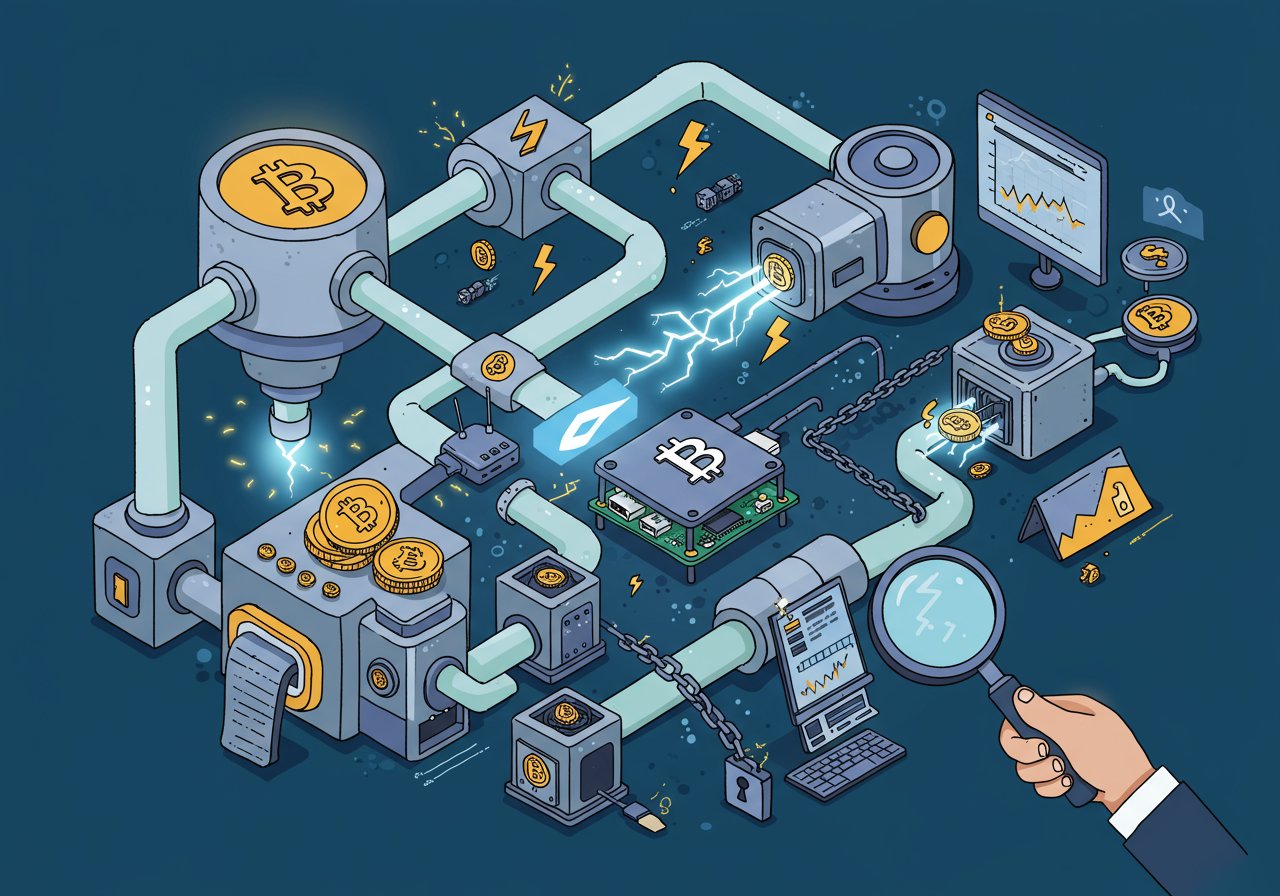
The Rise of Bitcoin‘s Lightning Network
Bitcoin‘s Lightning Network has emerged as a crucial second-layer solution, promising faster and cheaper transactions. This innovative protocol tackles the scalability limitations of the main Bitcoin blockchain by creating a network of bidirectional payment channels. These channels, essentially off-chain smart contracts, enable users to send and receive Bitcoin instantly, with only the final settlement recorded on the main chain. This structure allows for rapid, low-cost transactions, perfect for micropayments and everyday Bitcoin use.
How Lightning Nodes Operate
At the heart of the Lightning Network are nodes – individuals or entities running software that facilitates the routing of transactions. When users don’t have a direct channel open between them, the network uses a complex process to find a path across multiple nodes. This routing process, though computationally intensive, is essential for the network’s functionality. Nodes earn revenue by charging routing fees, a fraction of a percent of the transaction volume. The primary function of a Lightning node is to act as a “hub”, connecting various payment channels and enabling the transfer of bitcoin across the network.
Setting Up Your Own Lightning Node
Setting up a Lightning node is more accessible than ever. The hardware requirements are relatively modest, often achievable with a Raspberry Pi and an SSD. While the specifications can change and depend on specific needs, the general requirements include a stable internet connection and some processing power. The three common implementations include LND, Core Lightning (CLN), and Eclair, each with its own characteristics and strengths. Detailed guides are available to assist new node runners with setup and address common issues.
Profitability and the Reality of Passive Income
While the concept of passive income through a Lightning node is attractive, the reality can be more complex. The data shows that unless you commit serious capital and dedicate significant time to fine-tuning performance, profits can be limited. The network is somewhat concentrated, with a small number of large nodes controlling a significant portion of the network’s capacity. However, scaling can change the equation. As a node operator grows their channels and develops routing strategies, the profitability potential can increase. Factors such as channel size, competitive fees, and proactive rebalancing all play a crucial role.
Costs, Risks, and Best Practices
Running a Lightning node isn’t without its costs and risks. Onchain transaction fees, capital lock-up, server maintenance, and potential technical issues can all eat into profits. Furthermore, nodes are exposed to risks associated with potentially malicious actors. To mitigate risks, Lightning nodes rely on techniques such as watchtowers, external services that detect and punish cheating attempts. To maximize the potential for profit, several best practices are crucial:
- Connect to active, reliable peers, building channels with a balanced flow.
- Use dynamic fee automation tools to adjust fees.
- Diversify the channel base.
- Monitor and rebalance liquidity regularly.
The Future of Bitcoin‘s Second Layer
Running a Lightning Network node requires dedication, technical expertise, and a thorough understanding of the market dynamics. It offers a unique way to support the Bitcoin network and potentially earn passive income. As the Lightning Network continues to evolve, optimizing strategies and adapting to network changes will be critical for those seeking to generate returns. In a space that’s always evolving, staying informed and actively engaged with the network is the best strategy.


